The world watched in stunned horror as the Columbia space shuttle plunged towards Earth on February 1, 2003, killing seven crew members including Israel’s first-ever astronaut Ilan Ramon.
The astronauts had spent 16 successful days in space on a microgravity research mission, but they would not make it home.
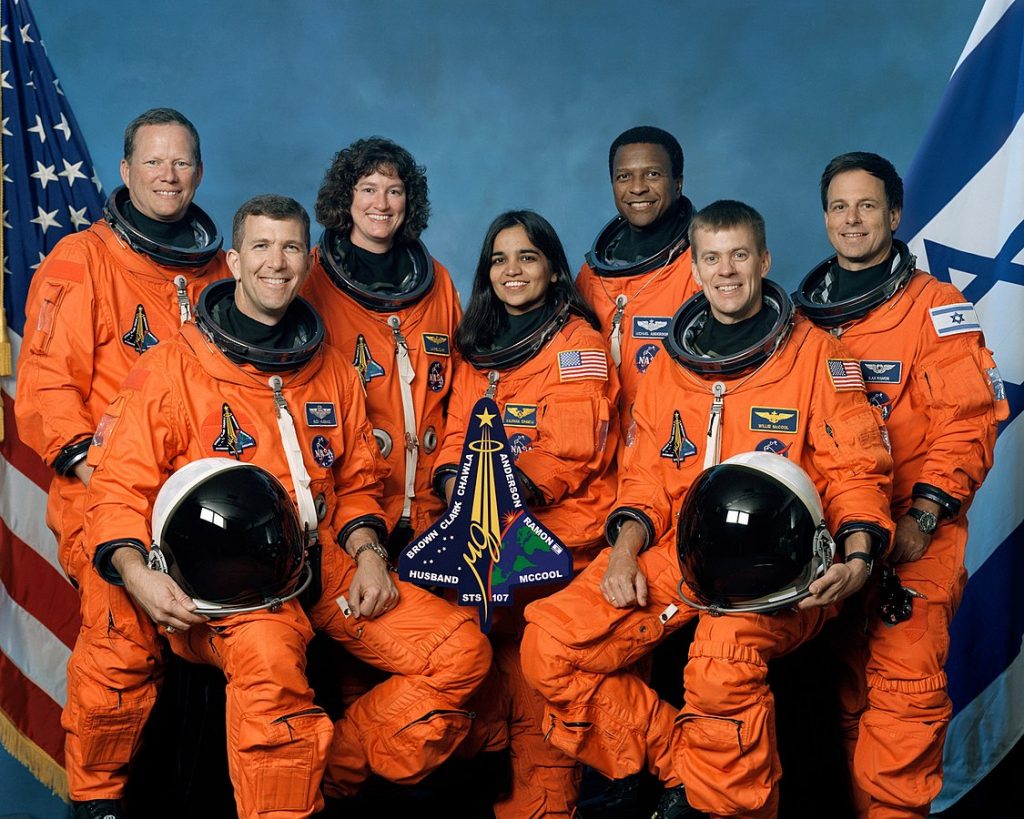
Miraculously, Ramon’s diary during the journey survived the explosion. Its crumbled remains were found approximately two months after the crash in a Texas field, having survived sun, rain, and fiery flames. It was the only diary ever found and was handed over to Ramon’s wife, Rona, who then turned to Israeli experts to help restore the pages.
SEE ALSO: Inside Israel’s Beresheet Spacecraft — A Great Technological Achievement
Forensic specialists worked for over four years to piece together the journal and were able to reconstruct approximately 30 pages of the tattered diary using computer image-enhancement technology and infrared light. Of those pages, eight were of Ramon’s personal diary written from space with black ink and pencil, six were technical notes written by him in blue ink which had been completely washed out, and eight pages of personal notes written before the journey, also in blue ink, including one where he had written out the Kiddush prayer. An additional 12 of pages were empty.
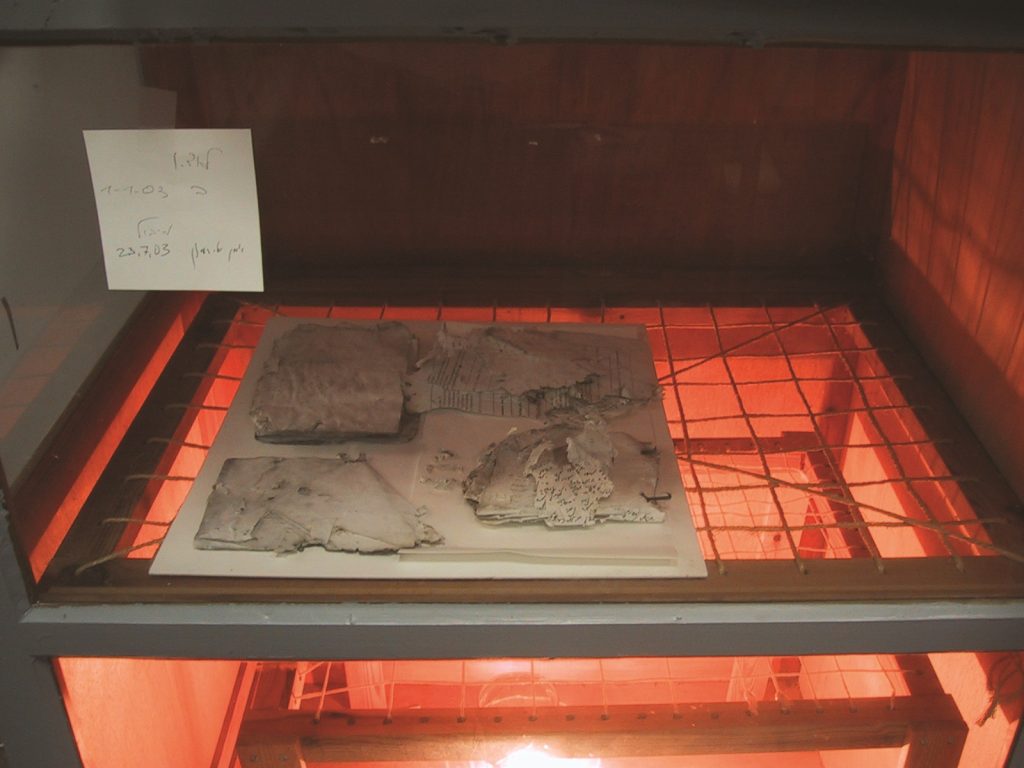
In 2008, a small section of reconstructed pages from the diary went on display at the Israel Museum in Jerusalem as part of an exhibit to celebrate the 60th anniversary of the country. They were housed in the museum’s Document Conservation department and showcased publicly as an example of an important document in the history of the State of Israel.
Last week, a new exhibit called “Through Time and Space” opened at the museum, displaying new sections of the reconstructed diary where Ramon wrote candidly about living in space.
“Who would have believed it? There’s no time to think about it. We concentrate on our tasks. Try to adjust to feeling weightless, the body doesn’t listen to orders. I decide to take another Phen-Dex [medication for space sickness] pill,” he wrote on the 5th day.
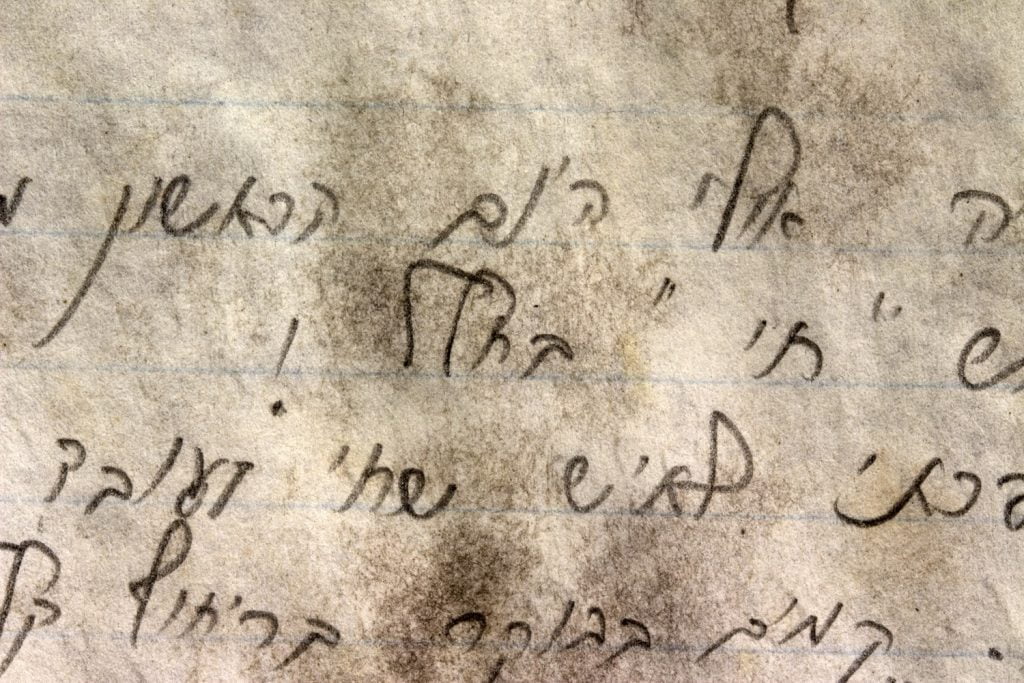
A day later, he wrote: “What an experience! It’s like something out of the movies. From the world of tomorrow. From a world that only a few get to experience. This floating. Beautiful Earth. the fragile atmosphere. The company here. I’m speechless!”
The new exhibit links the diary to the biblical Book of Enoch from the Dead Sea Scrolls, also reconstructed through advanced deciphering technologies.
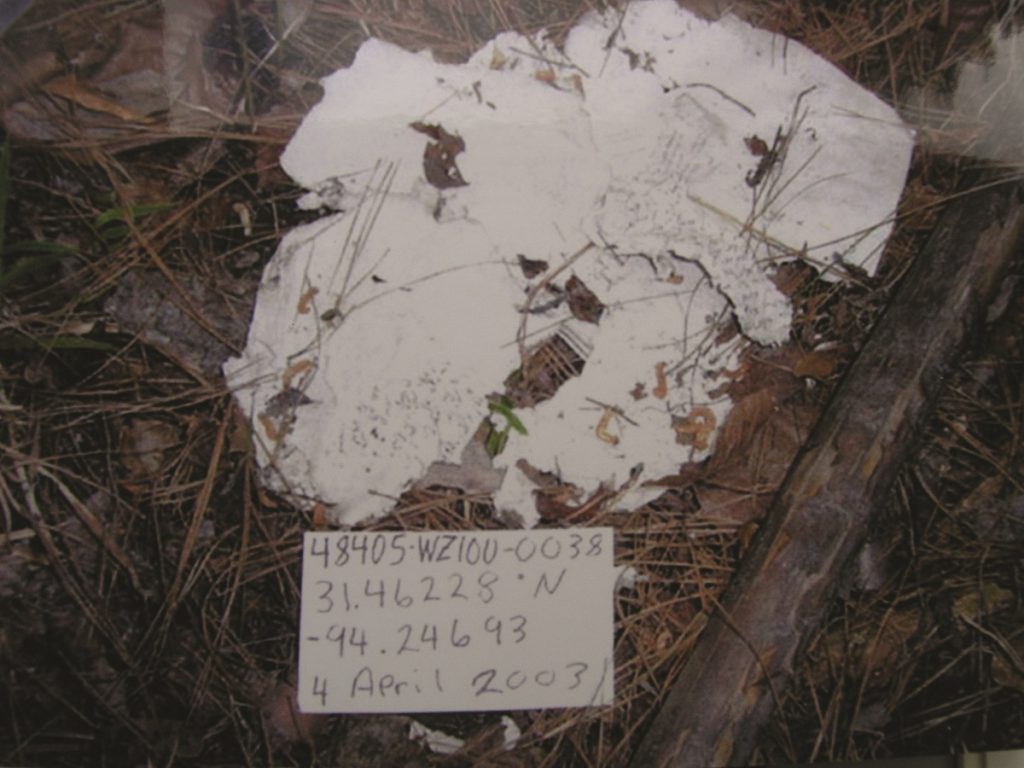
Curated by Dr. Adolfo Roitman, Hagit Maoz, and Michael Maggen, the exhibit, titled “Through Time and Space,” examines the protagonists of both manuscripts and etches out their similarities.
“It is not readily apparent what links the crew notebook of Israeli astronaut Ilan Ramon to the Enoch Scroll, one of the earliest Jewish spiritual treasures,” writes Roitman in the catalogue detailing the new exhibit. Yet, an examination of the two texts reveals that they have much in common.
“Both protagonists can be considered the first space travelers of their kind, and both texts feature a first-person account of a visit to the cosmos – one at the dawn of history and one in the modern era,” he writes.
Sign up for our free weekly newsletter
SubscribeAnother key element is their very survival, according to Roitman. “The remnants of the Enoch Scroll were found among the Dead Sea Scrolls – the 2000-year-old manuscripts discovered in the Qumran caves in 1947–56. Ilan Ramon’s diary survived the explosion of the Columbia Space Shuttle on February 1, 2003, and was found two months later in a field in San Augustine, Texas,” he writes.
The Book of Genesis says Enoch lived 365 years before he was “taken by God” to Heaven. The texts states that he “walked with God: and he was no more; for God took him.”
Many readers interpret this to mean that Enoch doesn’t die, Roitman explains, “but he is taken to heaven and there he describes what he saw in the cosmos, what he saw with his own eyes. In some way, this is what we have with Ramon. The diary he wrote is what he saw with his own eyes in the cosmos.”
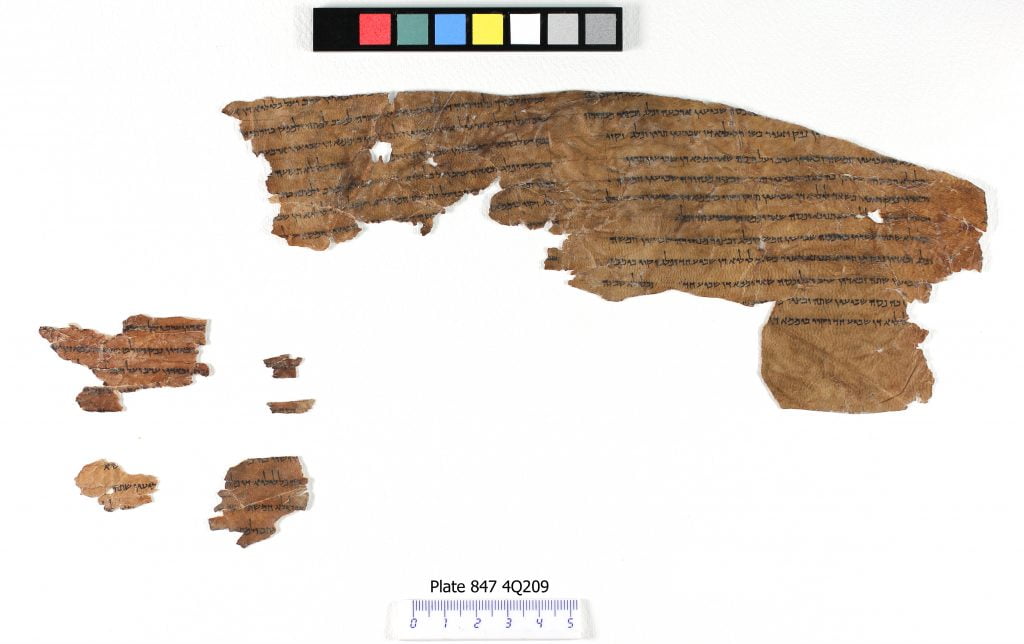
In a phone interview with NoCamels, Dr. Roitman says that upon close inspection of both texts he saw the “miraculous connections.”
“We put a puzzle together and combined pieces that appear to be unrelated. But together, they take on new meaning,” says Roitman, adding that this is the first time ever the original manuscript of the Enoch scroll is on display.
Rona Ramon’s dream
When the diary first went on display at the Israel Museum to celebrate Israel’s 60th birthday, Ramon’s late wife Rona backed the exhibit, saying “This is a small miracle that needs to be shared.”
Roitman became involved in 2014 when Rona Ramon came to his office along with Michael Maggen, the museum’s head of paper conservation and one of the experts working to preserve the diary. She had “a dream” to put the diary on display, proposing that the recovered fragments be showcased “to tell the story of Ilan Ramon,” Roitman says.

“The idea was tabled for a few years,” Israel Museum director Ido Bruno describes in the catalog of the exhibit, “but when I became director over a year ago, Rona and Michael raised it again. By chance, Adolfo Roitman, curator of the Shrine of the Book, was in my office for this meeting and was struck by the similarities between Ilan Ramon’s diary and the Enoch Scroll.”
Bruno said that a larger space would allow them to present the story in its entirety and when the team learned of Rona’s illness, they tried to accelerate the completion of the exhibit that was “so close to her heart.”
Rona Ramon died this past December after a long battle with pancreatic cancer. She was a public activist, advancing STEM (Science, technology, engineering, and mathematics) studies in Israel, and helping to found the annual Space Week events. She established the Ramon Foundation to promote space education and youth leadership skills in memory of her husband, and son, Asaf Ramon, a fighter pilot in the Israeli Air Force who died in a training accident in 2009.
“Through Time and Space” opened at the Israel Museum of Jerusalem on Tuesday, May 20 and will run for the next six months.
Related posts

Editors’ & Readers’ Choice: 10 Favorite NoCamels Articles

Forward Facing: What Does The Future Hold For Israeli High-Tech?

Impact Innovation: Israeli Startups That Could Shape Our Future




Facebook comments